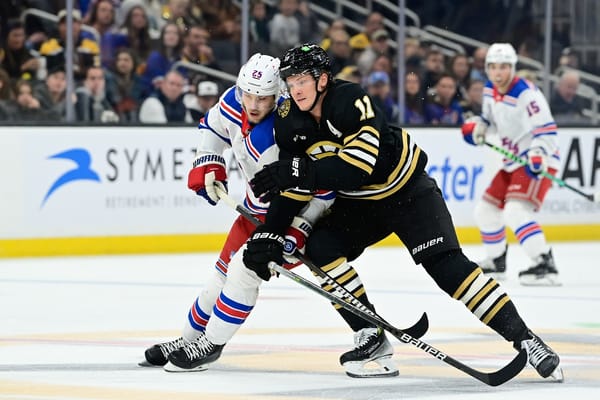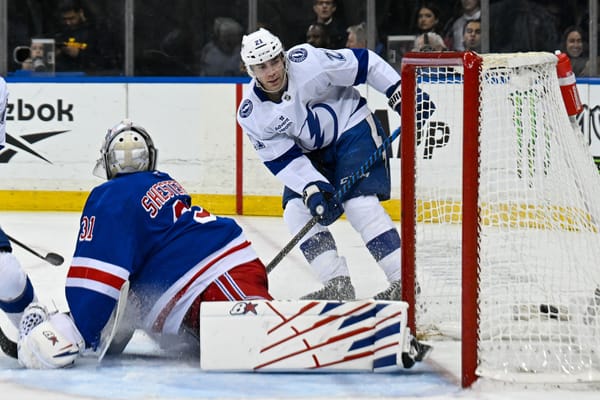Making it Count with Lias Andersson
It’s still very early, but a pattern is already emerging with Lias Andersson’s ice time
Before we jump into analysis based on the first three games of the New York Rangers season, it’s essential to establish the fact that this is a very small sample size. That means we should all pause before jumping to any conclusions, especially about ice time. With that being said, one of the developing storylines for the Rangers in the early days of October has been about Lias Andersson’s ice time.
Before Saturday afternoon’s game against the Edmonton Oilers, Larry Brooks of the New York Post asked head coach David Quinn if Andersson or Brett Howden might find themselves centering the second line. “Without question, that’s on the table,” Quinn responded. “If their play warrants it, they’ll certainly get that chance.”
Jeff Gorton’s decision to move Vladislav Namestnikov to the Ottawa Senators created opportunity for some of his former teammates, Andersson being one of them. However, the young Swedish center had just three shifts in the first period against the Oilers and finished the game with 7:16 TOI/GP. Brett Howden, on the other hand, had 15:33 TOI/GP and Greg McKegg skated less than 8:00 in his Rangers debut.
So, where did all of that ice time go? The answer, of course, is the Rangers’ new top line.
Mika Zibanejad, Artemiy Panarin, and Pavel Buchnevich all played over 21:42 and Zibanejad led the way among all Rangers’ forwards with 24:22. It goes without saying that this is not a sustainable model for Quinn and the Rangers, especially with the pressing need to develop young forwards like Andersson and Howden. It’s likely that the Rangers’ eclectic schedule has likely played a role in Quinn unabashedly leaning on his top line. Unfortunately, that hasn’t done Andersson any favors.
Through the first three games of the year, the 7th overall pick of the 2017 Draft has averaged 6:33 TOI/GP at 5-on-5 and, interestingly enough, over two minutes of ice time on the penalty kill. To add a bit of context here, Andersson averaged 9:56 TOI/GP at 5-on-5 and 0:39 SH TOI/GP in 42 games last season. Again, we need to stress that this is just a three-game sample size, but it’s interesting to see if this are patterns in ice time are just a result of a bizarre schedule or if Andersson will be steered towards developing into a shutdown, penalty-killing center.
Needless to say, this is a big season for Andersson. Now 21, there is a lot of pressure for him to carve out a role on this team even if the spotlight is currently fixed on Kaapo Kakko. Moving forward, it will be interesting to see what kind of role Quinn envisions for the developing young center, especially now that the Rangers’ center depth is even more shallow than it was on opening night.




